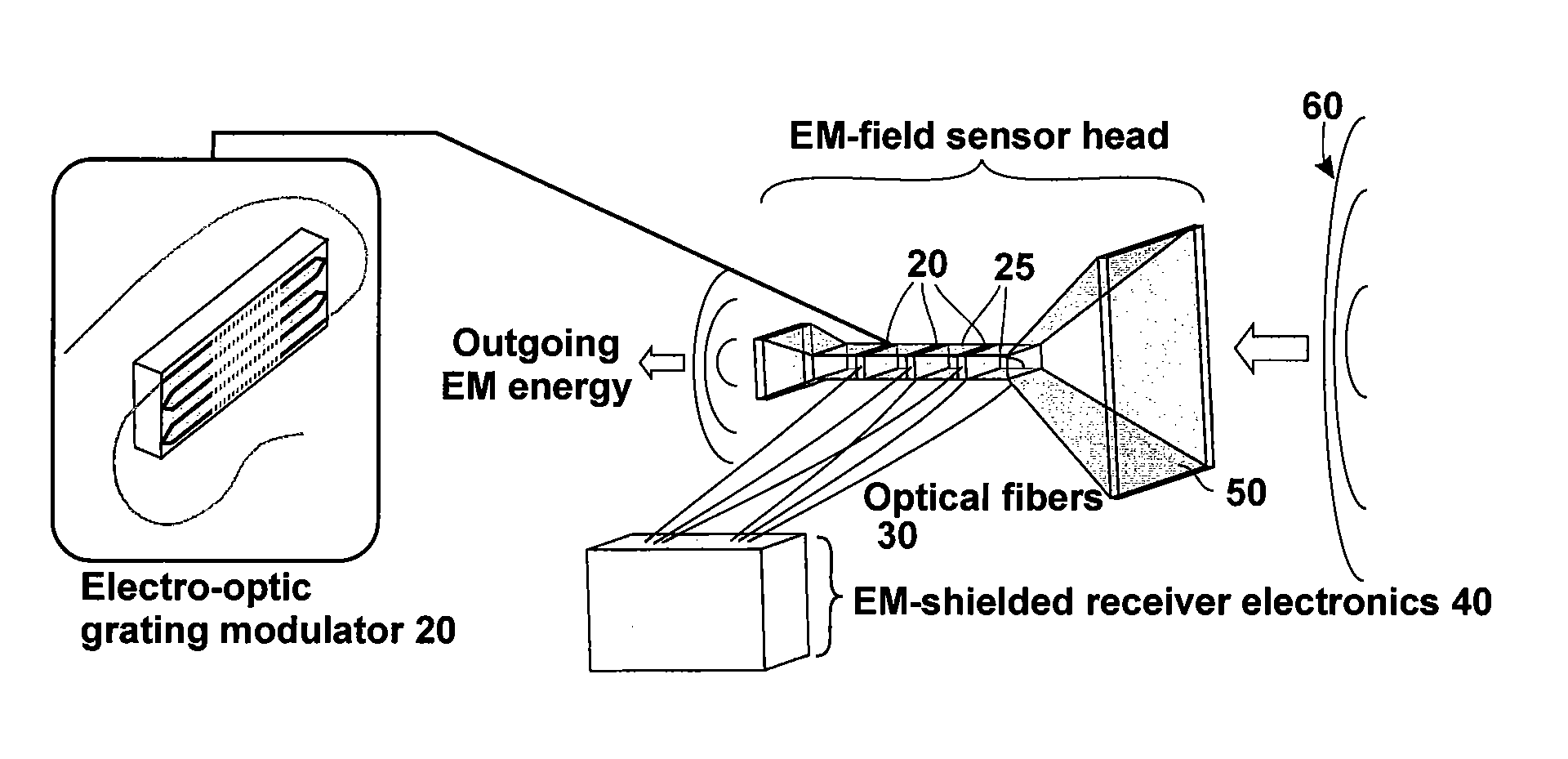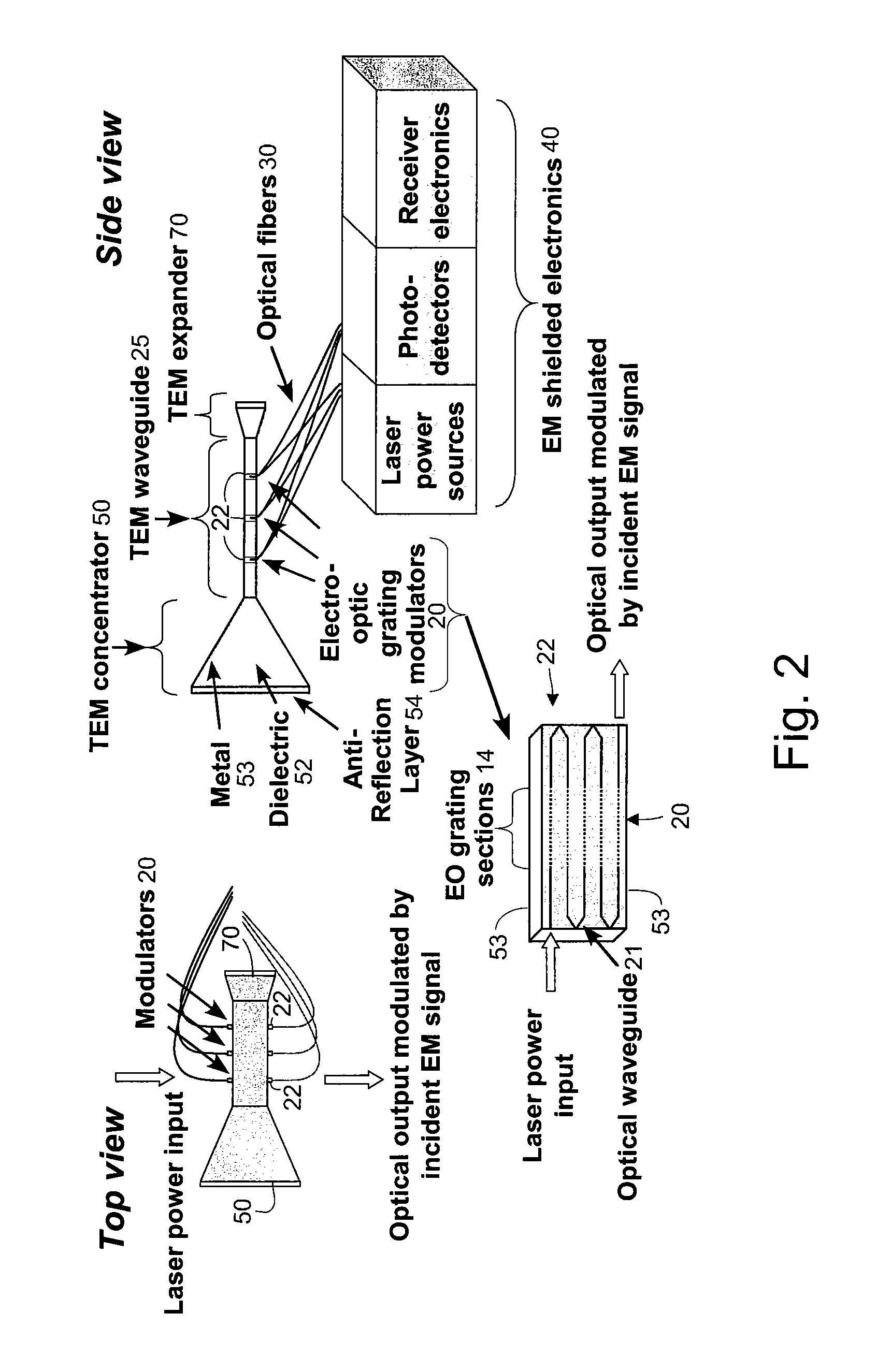Microwave receiver front-end assembly and array
- Summary
- Abstract
- Description
- Claims
- Application Information
AI Technical Summary
Benefits of technology
Problems solved by technology
Method used
Image
Examples
Embodiment Construction
[0038]The technology described in this disclosure addresses the need to maintain high radio sensitivity, while at the same time, insuring tolerance to unwanted high-power, transient electromagnetic radiation. The disclosed microwave front-end assembly (or sensor head) 10 (see FIG. 1) includes a series of high-sensitivity electro-optic (EO) modulators 20. The modulators 20 passively probe the incoming electromagnetic (EM) field, by the field-dependent EO effect, without absorbing its associated EM energy. Optical fibers 30 of the microwave-photonic (MWP) links optically connect the sensor head 10 to a shielded enclosure 40 that protects the receiver electronics therein. As illustrated in FIG. 1, the sensor head 10 consists of a transverse electromagnetic (TEM) horn antenna 50 coupled to a dielectric-filled TEM microwave waveguide 25 containing at least one dielectric EO modulator 20. The design and quantity of the EO modulators 20 provide sufficient degrees of freedom to scale the re...
PUM
 Login to View More
Login to View More Abstract
Description
Claims
Application Information
 Login to View More
Login to View More - R&D
- Intellectual Property
- Life Sciences
- Materials
- Tech Scout
- Unparalleled Data Quality
- Higher Quality Content
- 60% Fewer Hallucinations
Browse by: Latest US Patents, China's latest patents, Technical Efficacy Thesaurus, Application Domain, Technology Topic, Popular Technical Reports.
© 2025 PatSnap. All rights reserved.Legal|Privacy policy|Modern Slavery Act Transparency Statement|Sitemap|About US| Contact US: help@patsnap.com



